
KOHTEI is an art pavilion built in Shinshoji Zen Museum and Gardens within the campus of Tenshinzan Shinshoji temple in Fukuyama-city, Hiroshima, Japan. The temple was founded by the shipbuilding company to console the spirit of the dead in accidents at sea and industry.

The approach from a seamless and minimal footbridge, provides the visitor with a breathtaking first impression. Koh-tei’s distinctive form was inspired from the roots of temple’s establishment which led to create a building that resembles the motif of a ship. It is “an architecture that floats on waves surrounded by mountains” and is themed to work with three fundamental materials “Wood”,“Stone” and “Water”.
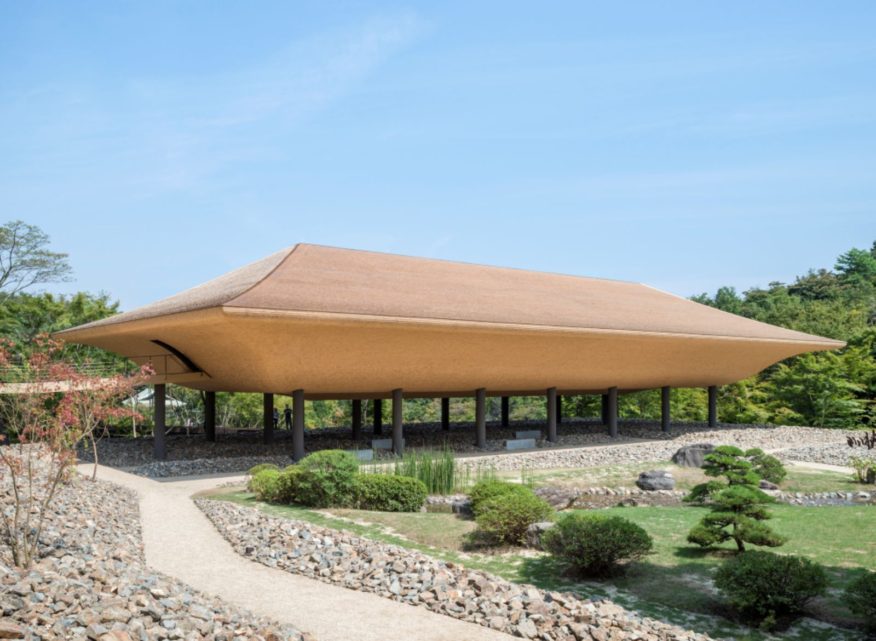
The ship-shaped building, covered with wood shingles that uses the traditional Kokera roofing technique floats above the stony landscape. Walking through the ocean of stones, full of materiality, one goes up the gently sloping walkway to reach the entrance of the building.

Upon entering the interior, a quietly rippling ocean with glimmers unfolds in the darkness. ~ Kohei Nawa. The body of the pavilion is entirely covered with Sawara wood (Japanese cypress) that seems to hover above the landscape creating underneath a piloti space. The woodwork on the roof was laid using Kokera-buki, a traditional roof-ing technique that is available in Japan for thousands of years.
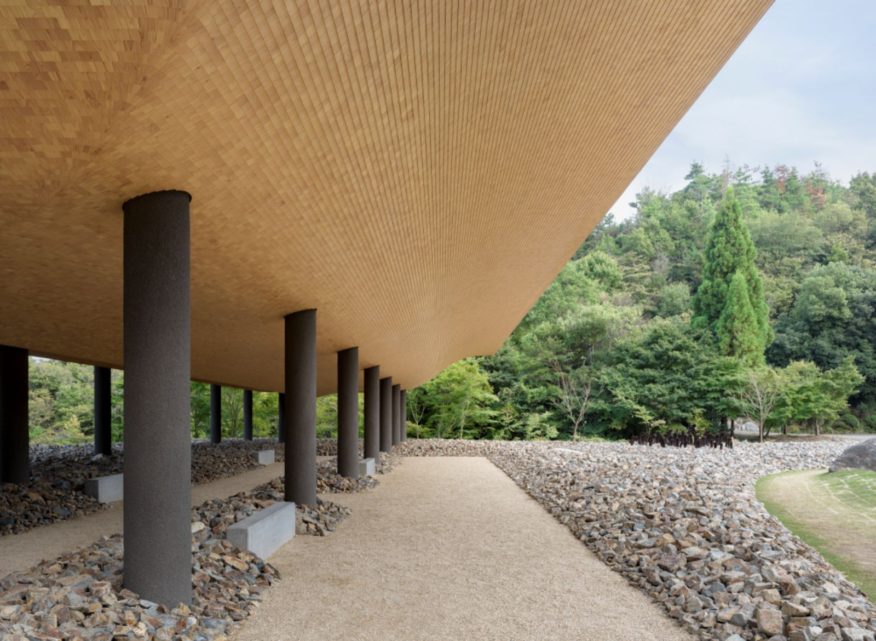
This is a kind of shingle roofing where instead the tiles are 100mm x 300mm x 3mm thick, and 9 layers of tiles are fixed with bamboo nails making one roof compound. In total, 340,000 pieces were laid by the16th generation roofing master based in Kyoto. For the soffit, 250,000 pieces of 100mm x 100mm Sawara wood tiles were used in order to give a monolithic appearance to the pavilion.
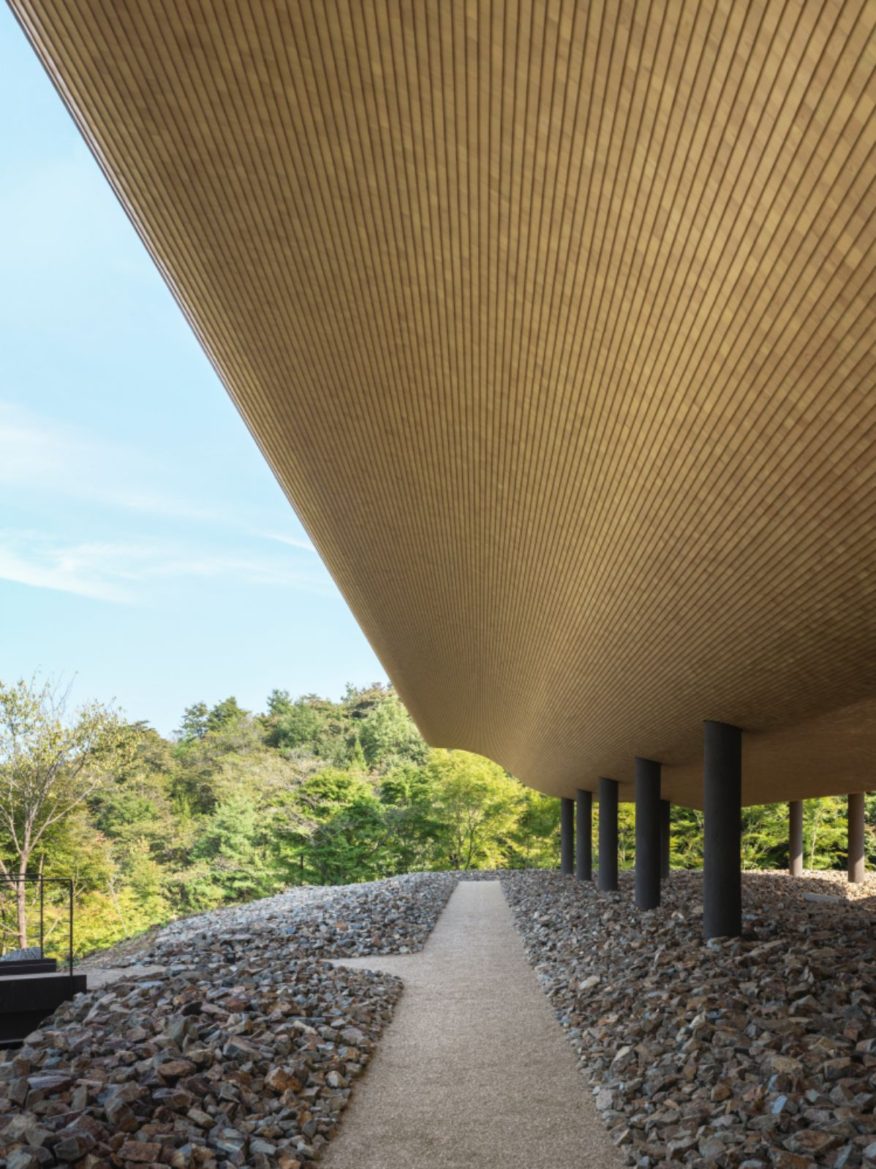
The experi-ence of standing underneath such space enhances the stark materiality of the landscape against the airy contours of the wooden roof. Surrounding views are framed and visitors can experience ever changing sceneries. The stone landscape represents the ocean in which the ship smoothly floats. The rugged stone has a high content of iron that rusts over the time.
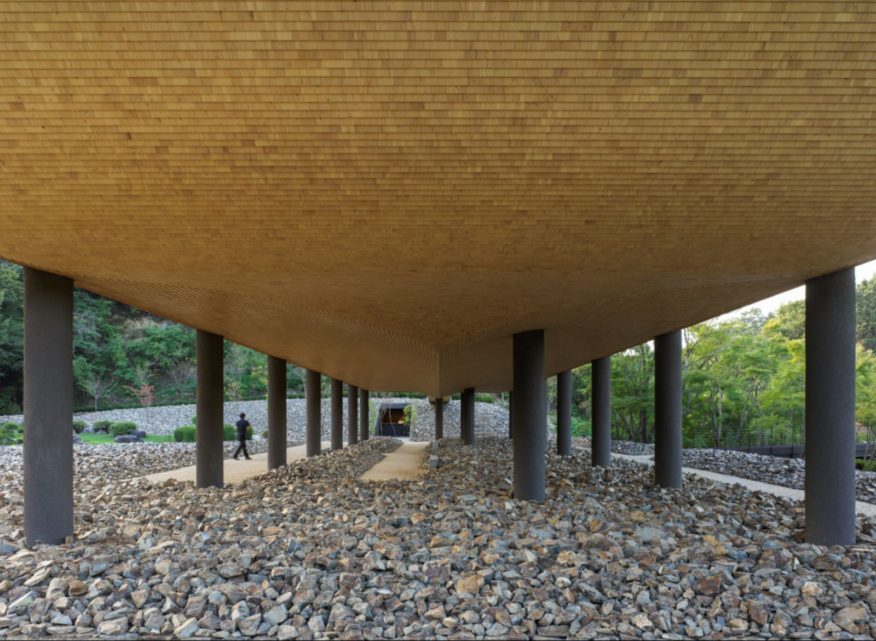
It was brought from nearby quarries unrefined and in its original state just as the dynamite blasted it off the face of the cliff, where each stone varies in size and shape, and where its sharp edges provide a strong effect of contrasting light and shadow to the surrounding groundscape. The path guides the visitors through the land-scape, garden and building providing them with as one seamless experience, allowing them to perceive the building in its multiple aspects.

The path gradually leads the visitors into the interior of the vessel-like roof through a small entrance where one finds an installation spreading in the darkness. The installation represents the immensity of the ocean and visitors can expe-rience meditation while observing the shimmering lights reflected on the quietly rippling water waves.

KOHTEI is a structure that exterior, interior and underneath space reflects the enfolding experience of being in the mountains, creating work that combines both physical and mental experiences. KOHTEI aims to generate creative expressions of inseparably integrated architectural functions: the reality created by the materials and textures, and the experiences they engender. Source by Sandwich.
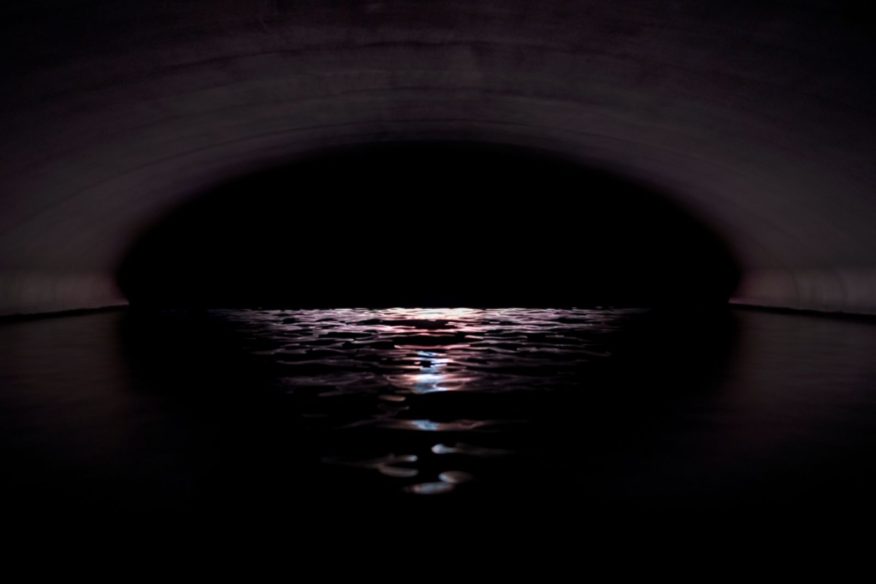
- Locations: Fukuyama, Hiroshima Prefecture 720-0401, Japan
- Architect: Kohei Nawa, Sandwich
- Architect in Charge: Yoshitaka Lee, Yuichi Kodai
- Art Installation: Kohei Nawa, WOW Inc.
- Sound: Marihiko Hara
- Structural design: Shizuo Tonomura of Ascoral Engineering Associates
- Equipment design: Yamada Hiroyuki of Yamada Machinery Office
- Roofing: Yoshifumi Miyagawa of Miyagawa Roof Company
- Lighting Design: Izumi Okayasu of Izumi Okayasu Lighting Design
- Construction: Daiwa Construction
- Landscape Supervision: Seijun Nishihata (Sora Botanical Garden)
- Graphic design (logos, signs and tools): Yuma Harada and Keisuke Yamazoe of UMA/design farm
- Project management: Toshiko Ferrier of Office Ferrier
- Site area: 4700 m2
- Built area: 796 m2
- Year: 2016
- Photographs: Nobutada Omote, Courtesy of Sandwich




